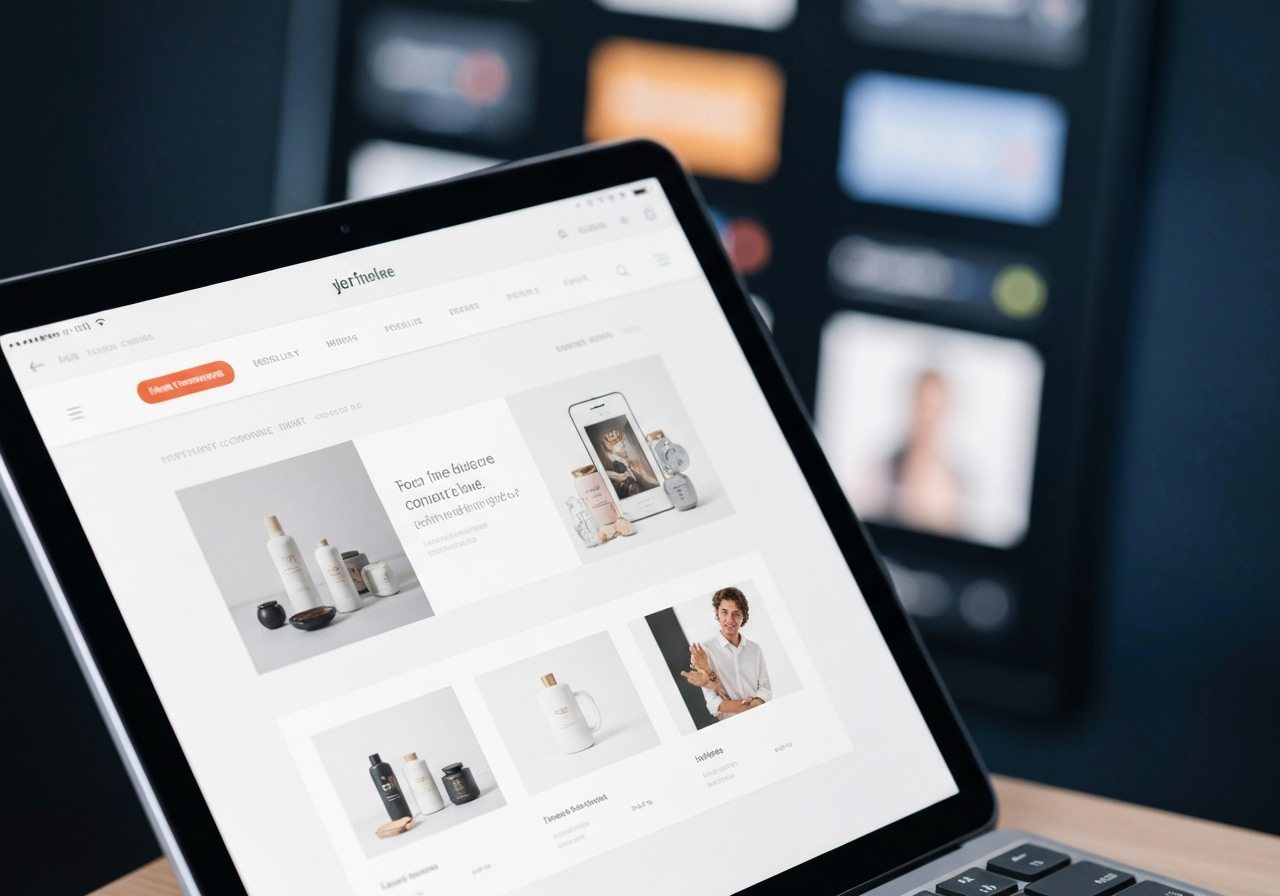Defining E-Commerce Brand Identity: More Than Just a Logo
Building brand identity in e-commerce extends far beyond a visually appealing logo or a catchy tagline. It encompasses the entirety of how your online business is perceived, shaping customer impressions, fostering trust, and influencing purchasing decisions. A robust e-commerce brand identity is a cohesive blend of visual elements—such as colors, typography, and imagery—and intangible aspects like brand values, personality, and consistent messaging across all digital touchpoints. It’s the unique essence that differentiates a business in a crowded online marketplace and lays the groundwork for sustained growth and customer loyalty.
The Strategic Imperative of Building Brand Identity in E-Commerce
In today’s highly competitive digital landscape, merely offering great products is no longer enough. The strategic importance of building brand identity in e-commerce lies in its ability to create a lasting connection with consumers. A strong brand identity sets a business apart, making it recognizable and memorable, which is crucial when customers are bombarded with countless options. When customers feel connected to a brand, studies indicate they are significantly more likely to increase their spending and choose that brand over a competitor. This demonstrates how a well-defined brand directly contributes to customer loyalty, repeat purchases, and ultimately, a healthy bottom line.
Furthermore, brand identity significantly impacts a business’s capacity to build customer trust. Consumers are often willing to pay more for brands they trust. This trust is cultivated through consistent branding that conveys reliability, authenticity, and a clear value proposition. It allows businesses to attract their ideal audience, ensuring that marketing efforts resonate more deeply and effectively convert prospects into loyal customers.
Core Pillars of a Powerful Online Brand Presence
A powerful online brand presence is built upon several foundational pillars that work in synergy to create a cohesive and impactful identity:
-
Logo Design and Visual Elements
The logo serves as the visual cornerstone of your brand. It’s often the first point of contact and must be instantly recognizable and reflective of your brand’s values. Beyond the logo, a carefully chosen color palette and consistent typography evoke specific emotions and set the overall tone. These visual elements, including high-quality product photography and imagery, are paramount in capturing attention and communicating your brand’s essence effectively. As highlighted by experts, visual design plays a critical role in shaping brand identity by establishing a unique and recognizable visual representation of the brand.
-
Brand Messaging and Storytelling
Your brand’s voice and message define how you communicate with your audience. This includes everything from product descriptions to social media posts. Developing a unique tone—whether playful, authoritative, or innovative—helps humanize your brand and builds trust. Beyond direct messaging, compelling brand storytelling creates an emotional connection, making your business more relatable. Sharing your origins, mission, and core values allows customers to connect with your purpose beyond just the products you sell. Stories are significantly more memorable than a list of facts, driving deeper engagement.
-
User Experience (UX) and Website Design
Your e-commerce website is a primary representation of your brand identity. Its design and user-friendliness are critical. An intuitive interface, seamless navigation, fast loading times, and mobile optimization contribute to a positive user experience that reinforces your brand’s professionalism and reliability. Optimizing the website design is crucial for product brands to enhance user experience and drive online success, ensuring a smooth customer journey from browsing to purchase.
Implementing a Cohesive Brand Identity Across Your Digital Ecosystem
Maintaining consistency across all digital platforms is perhaps the most critical aspect of effective brand identity implementation. Every interaction a customer has with your brand—whether on your website, social media, email campaigns, or even through customer service—should convey the same look, feel, and message. This consistency builds powerful brand recognition and fosters customer trust.
An expert insight often overlooked is that a fragmented brand experience across various touchpoints erodes trust and recognition, undermining all other branding efforts. For instance, if your website showcases a sleek, modern aesthetic but your social media presence is disjointed and informal, it creates dissonance that can confuse customers and dilute your brand’s message.
To achieve this cohesion, consider:
- Establishing Comprehensive Brand Guidelines: A detailed style guide outlining logo usage, color palettes, typography, imagery, and brand voice ensures everyone involved in content creation and marketing adheres to the same standards.
- Synchronizing Across Channels: Ensure your e-commerce platform, social media profiles, email marketing templates, and advertising creatives all reflect your unified brand identity. Leverage tools and strategies that enable a seamless omnichannel experience.
- Integrating Branding with Customer Service: Even customer service interactions should align with your brand’s defined voice and values, reinforcing the overall brand experience.
Measuring Success: Brand Identity’s Impact on E-Commerce Performance and ROI
Quantifying the return on investment (ROI) for branding efforts in e-commerce can seem challenging, but it is entirely measurable. The real-world lesson often overlooked by others is that the true ROI of branding isn’t just about immediate sales; it’s also about reducing customer acquisition costs and increasing customer lifetime value over time. Many businesses focus solely on short-term marketing metrics and consequently underinvest in long-term brand equity, missing out on significant gains.
To effectively measure the impact of branding on e-commerce performance and ROI, consider tracking key performance indicators (KPIs) such as:
- Brand Awareness and Recognition: Metrics like website traffic (especially direct and branded search), social media mentions, and survey-based recognition and recall can indicate increased visibility.
- Customer Loyalty and Retention: Analyze repeat purchase rates, customer lifetime value (CLV), and customer retention rates. A strong brand encourages loyalty, which directly translates to higher CLV and reduced churn.
- Sales Volume and Price Premium: Monitor overall sales figures over time, particularly after branding initiatives. A powerful brand can command a price premium, allowing for higher profit margins without necessarily increasing sales volume.
- Customer Acquisition Cost (CAC): A strong brand can lower CAC by driving more organic referrals and direct traffic, making marketing efforts more efficient.
- Brand Reputation: Track online reviews, customer satisfaction ratings, and social listening insights to gauge how your brand is perceived by the market.
By consistently tracking these metrics, businesses can make data-driven decisions regarding branding investments, optimize strategies, and demonstrate the tangible value of a powerful brand identity. McKinsey’s research indicates that companies applying data-driven performance branding can see significant gains in marketing efficiency and incremental top-line growth.
Partnering for Brand Excellence: The Value of Expert Web Development
Achieving a sophisticated and impactful brand identity in e-commerce often necessitates expert assistance. Professional web development agencies play a pivotal role in translating a brand’s vision into a fully functional and visually compelling online presence. From crafting unique user experiences to ensuring technical performance and search engine optimization, their expertise is invaluable.
Idea Forge Studios specializes in comprehensive digital solutions, understanding that successful e-commerce goes hand-in-hand with strategic brand development. Whether it’s custom e-commerce web design, robust e-commerce solutions, or targeted internet marketing strategies, partnering with experienced professionals ensures that every aspect of your online presence reinforces your brand identity. Agencies like Idea Forge Studios, recognized for their capabilities in creating responsive, user-friendly, and SEO-optimized sites, ensure that the technical execution aligns seamlessly with your brand’s strategic goals, driving digital growth and enhancing your market authority. The right partner helps you not only build but also maintain and evolve your brand, ensuring it remains relevant and resonant in an ever-changing digital landscape.
Ready to elevate your digital strategy and solve your business challenges? Schedule a consultation with Idea Forge Studios today to discuss your specific web development, e-commerce, or digital marketing needs and discover how our expertise can drive your success.








Get Social